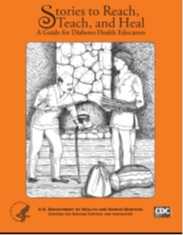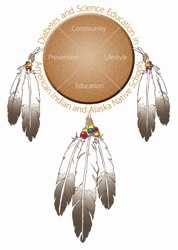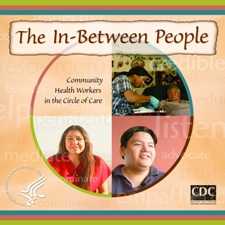Diabetes Publications and Resources
Stories to Reach, Teach, and Heal

Over the ages and across the cultures and continents, stories have served to reach, teach, and speak for people in times of hardship and illness.
CDC’s Division of Diabetes Translation developed a guide: Stories to Reach, Teach, and Heal: A Guide for Diabetes Health Educators. The stories illustrate how health educators can use storytelling to share wisdom and inspiration.
Stories to Reach, Teach, and Heal is a copyright-free booklet that can be reproduced without special permission.
Download a free copy of Stories to Reach, Teach, and Heal [PDF - 4MB]
Read about and download audio files for the Stories to Reach, Teach, and Heal
Health Is Life in Balance: The Diabetes Education in Tribal Schools K-12 Curriculum

The Health Is Life in Balance Diabetes Education in Tribal Schools (DETS) K–12 curriculum offers culturally relevant and scientifically based teachings in three sections: Grades K-4, 5-8, 9-12. The curriculum lessons are based on the 5 E's of educational instruction: Engagement, Exploration, Explanation, Elaboration, and Evaluation.
Learn more about The Diabetes Education in Tribal Schools K-12 Curriculum
Audio and Video
Several audio and video resources are also available to help promote diabetes prevention.
Community Health Representatives

Community Health Representatives are “in-between people” who serve as bridges between the health care system and their communities. This 21-minute podcast, developed by the Native Diabetes Wellness Program, documents the critical role of community health workers.
The Story of Diabetes

The Story of Diabetes is a 75-minute audio program that highlights diabetes prevention and education programs designed for Native Americans. It also identifies free diabetes prevention and education tools.
Additional Diabetes Resources
Division of Diabetes Treatment and Prevention.
National Diabetes Education Program.
CDC Diabetes Data and Statistics.
References
Brownstein JN, Chowdhury FM, Norris SL, Horsley T, Jack, Jr., L, Zhang X, et al. Effectiveness of community health workers in the care of adults with hypertension: a systematic review . Am J Prev Med 2007;32(5):433–437.
Bryan R, Schefer RM, DeBruyn LM, Stier D. Public health legal preparedness in Indian Country. Am J Pub Hlth 2009;99(S3):1–8.
Burrows NR, Li Y, Geiss LS. Incidence of treatment for end–stage renal disease among individuals with diabetes in the U.S. continues to decline . Diabetes Care . 2010;33(1):73–7.
Chino M, DeBruyn LM. Building true capacity: indigenous models for indigenous communities . Am J Public Health 2006;96(4):596–599.
Chino M, Dodge-Francis C, DeBruyn L, Short L, Satterfield D. The convergence of science and culture: Developing a framework for diabetes education in tribal communities. J Health Dispar Res Pract 2007;1(3):75–87
Dodge FC, Coulson D, Kalberer B, DeBruyn L, Freeman W, Belcourt J. The significance of a K-12 diabetes-based science education program for tribal populations: evaluating cognitive learning, cultural context, and attitudinal components. J Health Dispar Res Pract 2010;3(3):91–105.
Hosey G., Llorens-Chen S.A., Qeadan F., Crawford D., Wilson C., & Yang W. Assessing behavioral health risks, health conditions, and preventive health practices among American Indians/Alaska Natives in Nevada. J Health Dispar Res and Prac 2007;1(3)29–44. Journal of Health Disparities Research and Practice .
Jack L, Satterfield D, Rodriguez B, Liburd L, Rivera M, Lester A, et al. American Association of Diabetes Educators (AADE) position statement: cultural sensitivity and diabetes education: recommendations for diabetes educators . Diabetes Educ 2007;33:41–44.
Norris SL, Chowdhury FM, Van Le K, Armour T, Brownstein JN, Zhang X, et al. Effectiveness of community health workers in the care of adults with diabetes: A systematic review. Diabet Med 2006;23:544–566.
Satterfield D, Eagle Shield J, Buckley J, Taken Alive S. So that the people may live (Hecel Lena Oyate Ki Nipi Kte): Lakota and Dakota elder women as reservoirs of life and keepers of knowledge about health protection and diabetes prevention. J Health Dispar Res Prac 2007;1(2):1–28.
Satterfield DW, Lofton T, May JE, Bowman BA, Alfaro-Correa A, Benjamin C, et al. Learning from listening: common concerns and perceptions about diabetes prevention among diverse American populations . J Public Health Manag Pract 2003;Suppl:S56–63.
Satterfield DW, Murphy D, Essien JDK, Hosey G, Stankus M, Hoffman P, et al. Using the essential public health services as strategic leverage to strengthen the public health response to diabetes . Public Health Rep 2004;119(3):311–21.
Satterfield DW, Thompson-Reid P. We make the road by walking, with the people[PDF, 1MB] . Diabetes Spectr 2003;16(3):213–15.
Satterfield DW, DeBruyn LM. The malignment of metaphor: Silos revisited — repositories and sanctuaries for these times. Am J Prev Med 2005;29(3):240–41.
Satterfield DW, Volansky M, Caspersen CJ, Engelgau MM, Bowman BA, Gregg EW, et al. Community-based lifestyle interventions to prevent type 2 diabetes . Diabetes Care 2003 Sep;26(9):2643–52.
Wilson KE, Satterfield DW. Where are we to be in these times? The place of chronic disease prevention in health promotion . Prev Chronic Dis 2007;4(3).
- Page last reviewed: February 15, 2017
- Page last updated: February 15, 2017
- Content source:
- Maintained By:
- National Center for Chronic Disease Prevention and Health Promotion, Division of Diabetes Translation


 ShareCompartir
ShareCompartir